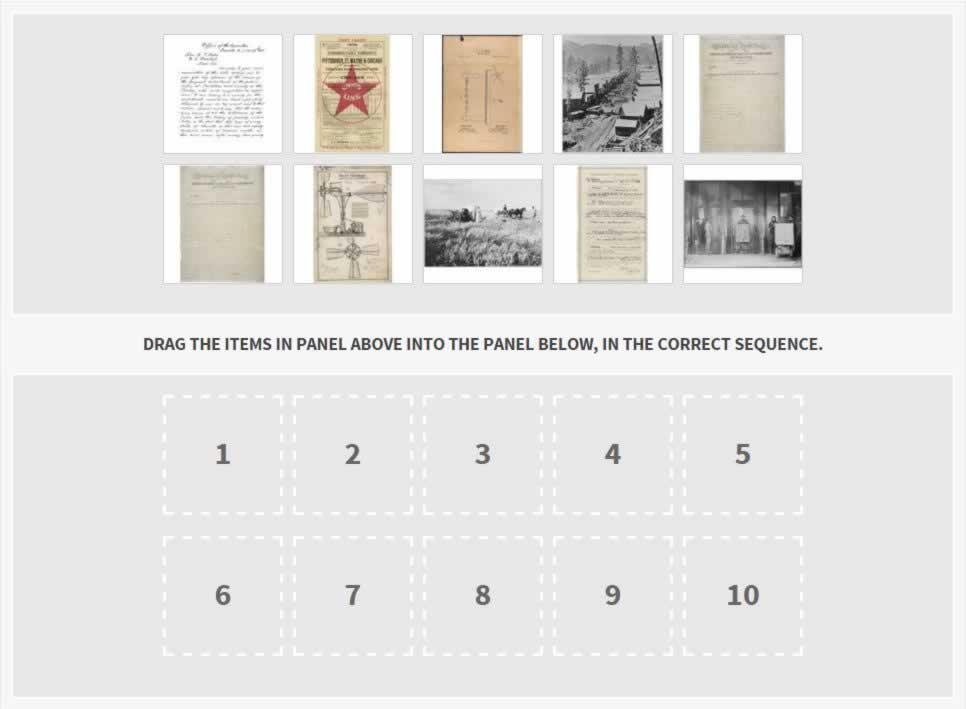Students will examine a variety of documents that reference reasons why Americans living in the East migrated west of the Mississippi immediately before, during, and right after the Civil War. Documents cover the mining industry, new inventions used on the Plains, the growth of the railroad, the Homestead Act, and the Cattle Kingdom.
Suggested Teaching Instructions
Objectives
Students will analyze primary sources to uncover reasons for expansion, and learn how motivations changed over time. For grades 7-12. Approximate time needed is 45 minutes.
Instructions
This activity can be used to introduce a unit on westward expansion. Alternatively, this activity can be completed gradually by a full class over the course of a unit, or used as a review at the end of a unit.
Begin by asking the class to hypothesize why Americans may have wanted to move west in the middle of the 19th century. Discuss general reasons that humans leave one place to move to another, as well as the particular cultural and political climate of the United States during this era. Ideas may be recorded for later reference.
Open the sequencing activity as a class. Look at a couple of the documents more closely. Ask students if anyone can identify and explain any of the documents they see without further examination. Ask for suggestions as to which documents are “earlier” and which are “later.” Students should be able to explain their presumptions. (To bolster students’ confidence and willingness to make informed guesses, remind them that at this point it is entirely appropriate to make a guess with scant evidence because they have not yet done any careful examination.)
Choose one of the documents used in this activity to model document analysis. Ask students to synthesize the information they have gathered and answer: “What can this document tell us about that time in history?” Remind students to replicate this close analysis of each document they open before they begin to move any of the documents. Ask them to work as a full class, in small groups, or individually for more advanced students, to put the documents in the correct chronological sequence according to their creation dates.
When students have placed all documents in the correct sequence, they should compile a list of possible reasons that Americans moved westward at this time:
- Gold rush and mining opportunities (silver in Nevada)
- The opportunity to work in the cattle industry; to be a “cowboy”
- Faster travel to the West by railroad; availability of supplies due to the railroad
- The opportunity to own land cheaply under the Homestead Act
- The discovery of wheat strains adapted to grow in the climate of the Plains.
- New inventions allowing them to adapt to life on the Plains, such as the windmill and barbed wire (students may need to speculate as to why homesteaders needed these)
- Adventure and the lure of the “Wild West”
Now ask students to determine which reasons pulled migrants to the West earlier and which influenced travelers later.
Students can continue their study of westward expansion by completing a companion activity contrasting the experience of Western settlers with the experience of
Native Americans in the West.For more information about the featured documents, follow the links below.





